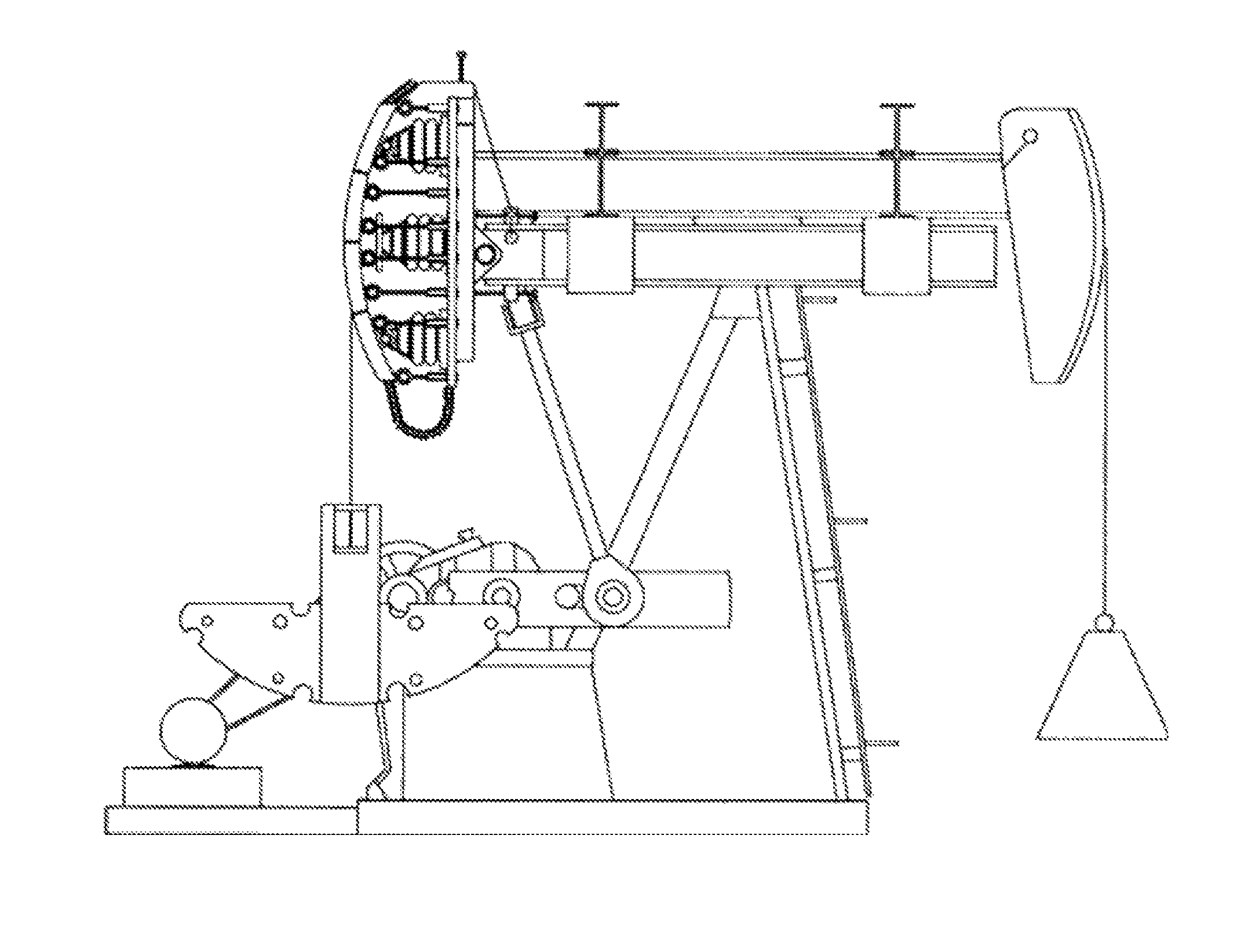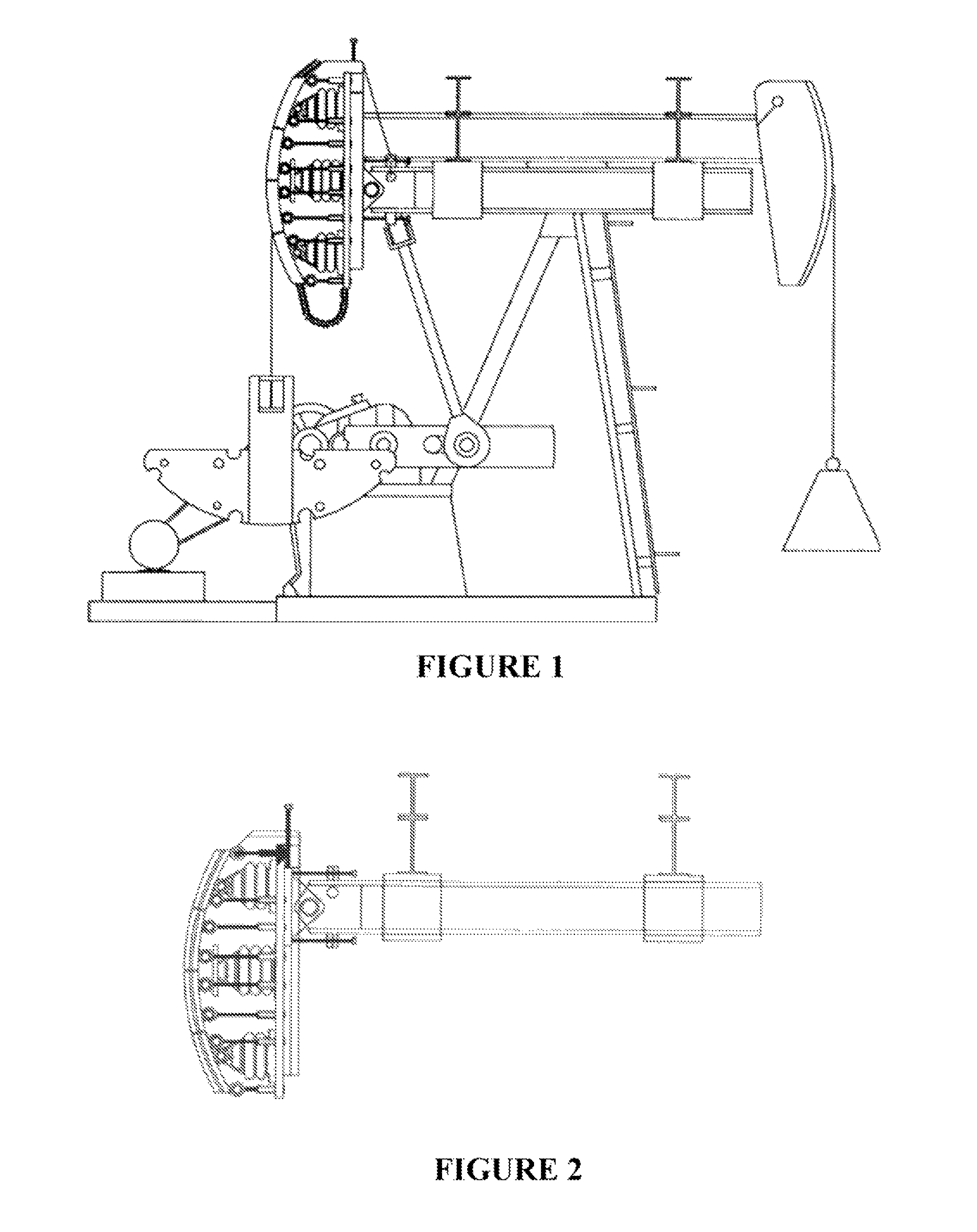Cross-jack counterbalance system
a counterbalance system and cross-jack technology, applied in machines/engines, positive displacement liquid engines, borehole/well accessories, etc., can solve the problems of reducing the stroke length and the pump capacity, and reducing the overall work of pumping, so as to reduce maintenance costs, reduce energy consumption, and save lift costs
- Summary
- Abstract
- Description
- Claims
- Application Information
AI Technical Summary
Benefits of technology
Problems solved by technology
Method used
Image
Examples
Embodiment Construction
[0026]The device and method of implementation of the current art can be retro-fitted onto pre-existing pumping platforms as described above, or it can be the core concept for a new unique pumping unit that incorporates the components, methods and utility of the current art. The embodiment of the current device consists of attachable components which reduce the work performed by a reciprocating pumping unit whether the down-hole weights are beam balanced, crankshaft balanced or compound balanced by uniquely counterbalancing them in this non-obvious manner, which eliminates the wasted work of horizontal translation of said weights while simultaneously reducing or eliminating unwanted induced torque forces produced by the mal-alignment of the center of gravity of the walking beam complex and the center of pivot of said beam complex. The methodology of setup and implementation of the device of the current art accomplishes the following utility:
[0027]a) The device installs and operates i...
PUM
 Login to View More
Login to View More Abstract
Description
Claims
Application Information
 Login to View More
Login to View More - R&D
- Intellectual Property
- Life Sciences
- Materials
- Tech Scout
- Unparalleled Data Quality
- Higher Quality Content
- 60% Fewer Hallucinations
Browse by: Latest US Patents, China's latest patents, Technical Efficacy Thesaurus, Application Domain, Technology Topic, Popular Technical Reports.
© 2025 PatSnap. All rights reserved.Legal|Privacy policy|Modern Slavery Act Transparency Statement|Sitemap|About US| Contact US: help@patsnap.com



